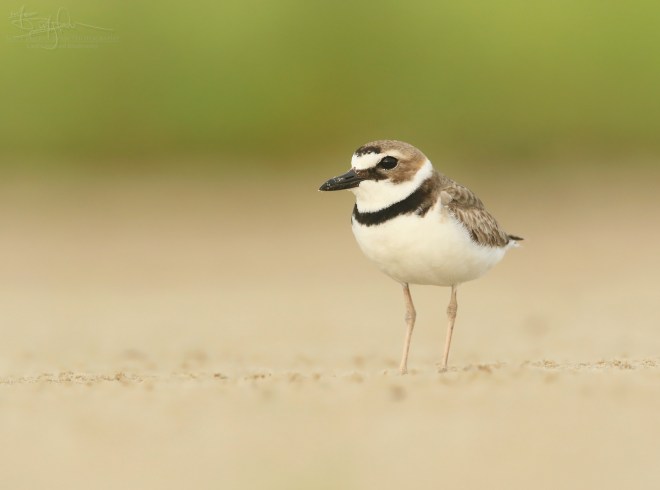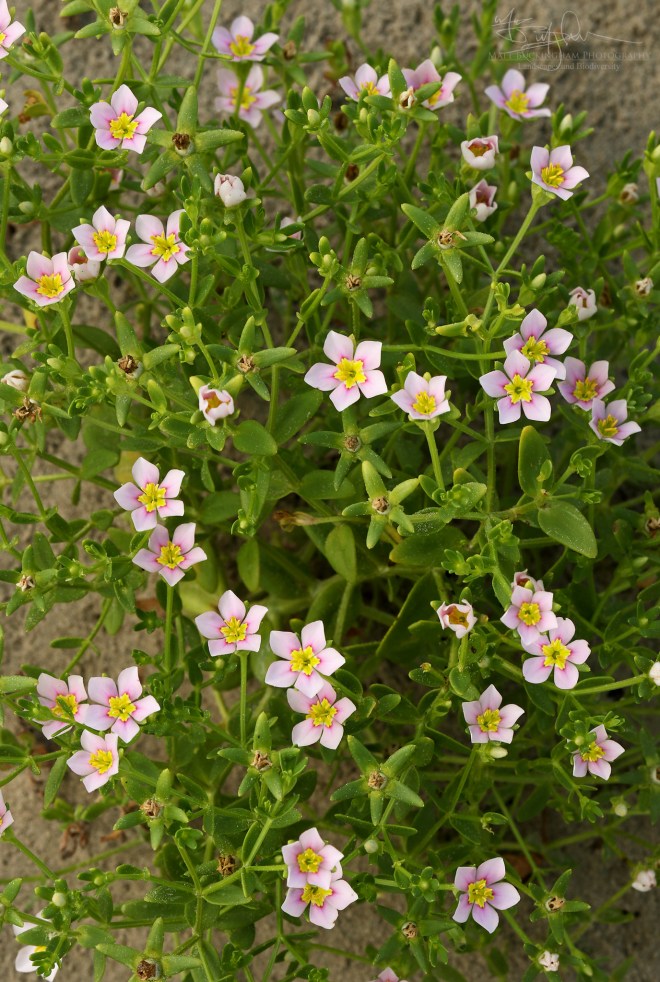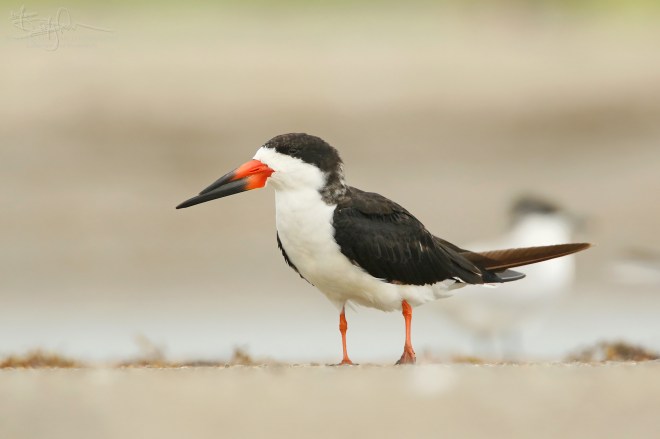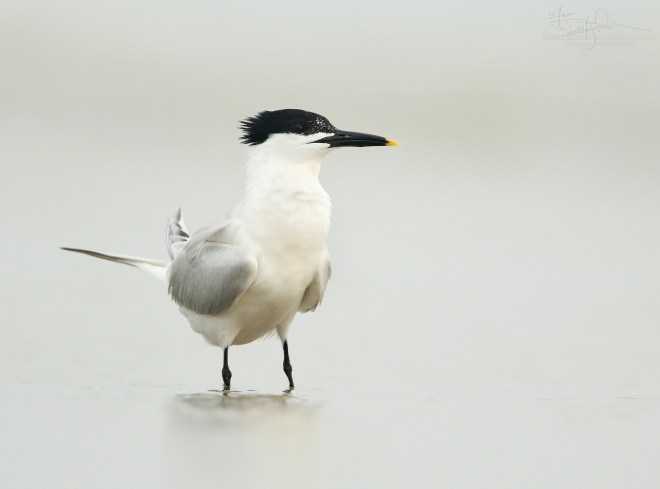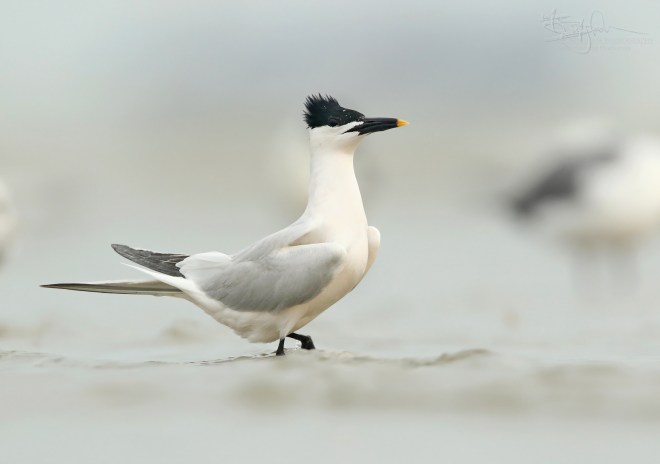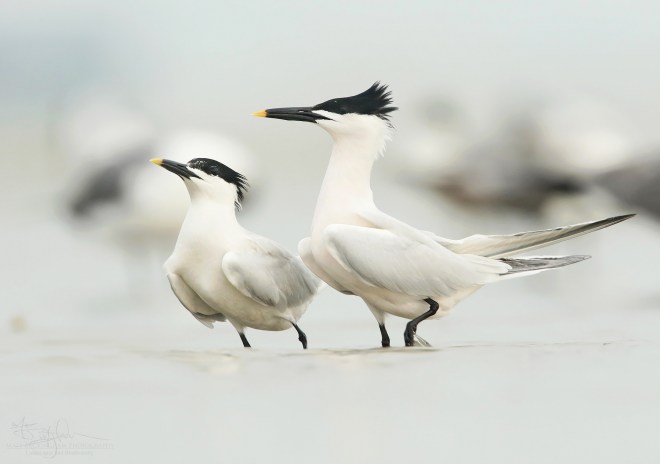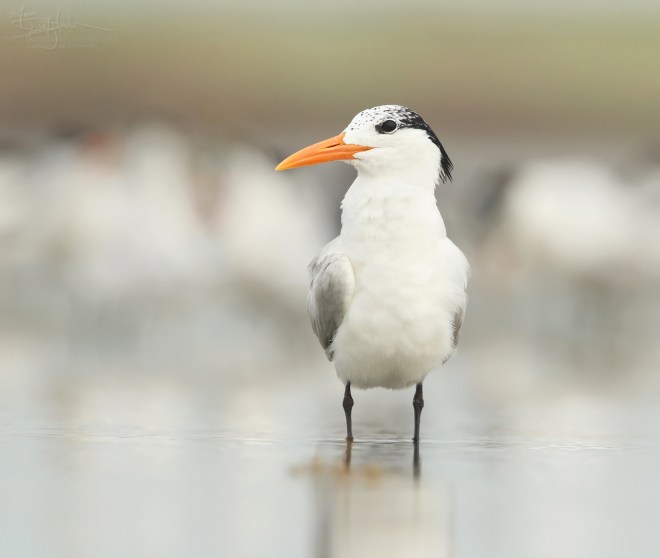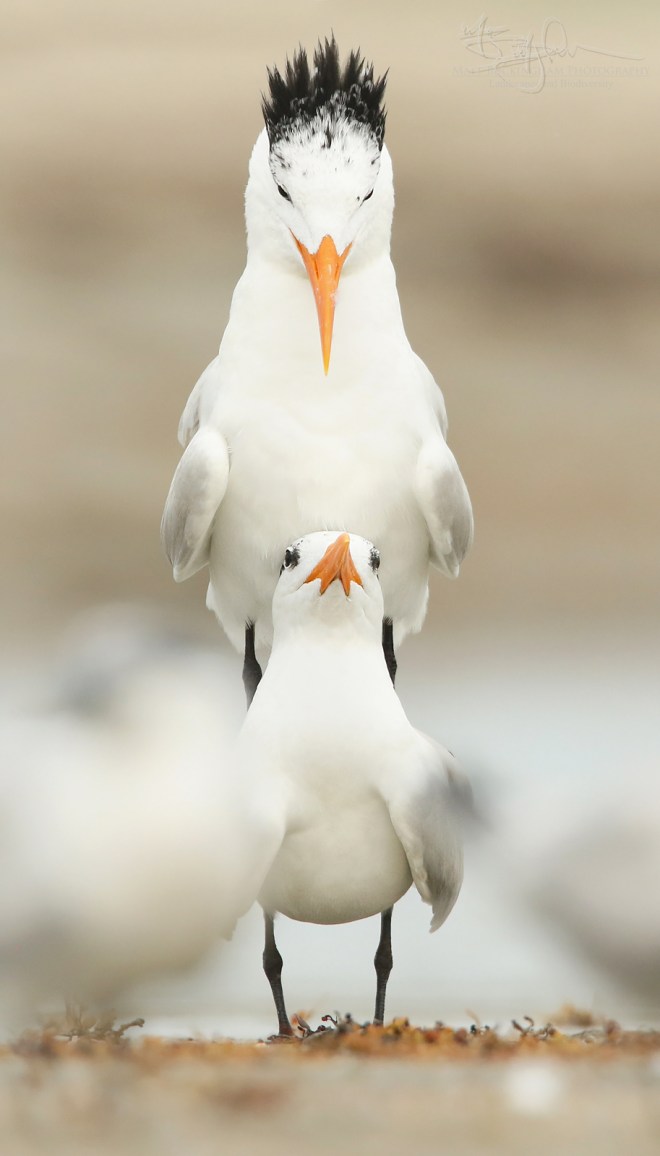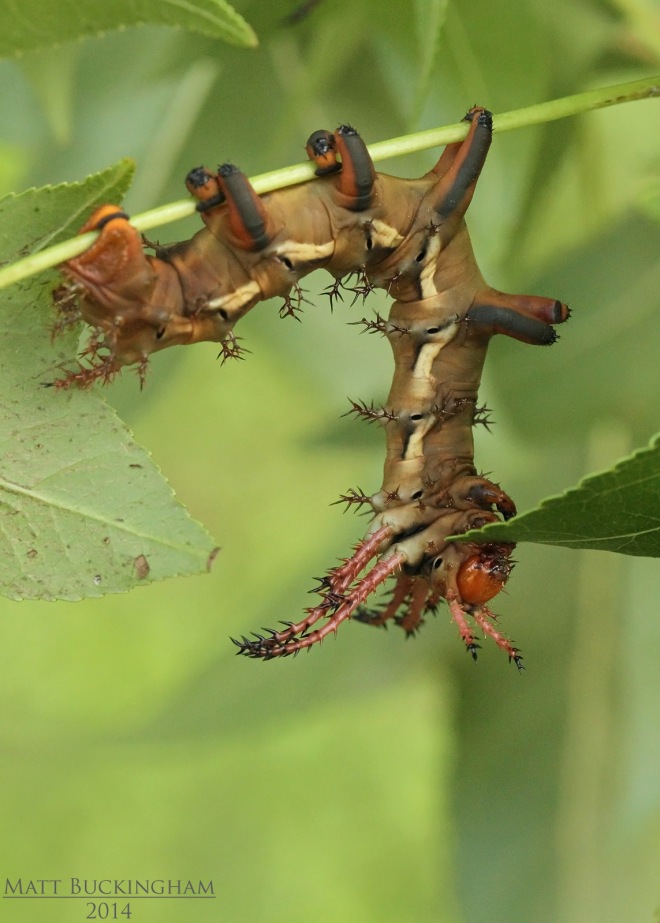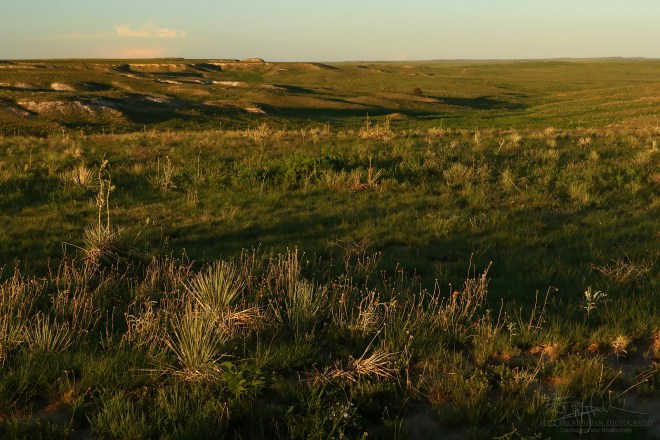
Rolling Prairie in Hartley County near the Canadian River Breaks.
Texas is primarily a prairie state. From the tallgrass prairies of the Gulf Coast to the Blackland Prairies and Cross Timbers and Prairies; and from the semi-arid grasslands of the Trans-Pecos to the Llano Estacado and the shortgrass prairies of the Panhandle Plains, the Lonestar State is largely defined by these graminoid-dominated communities. Despite all of this, our native prairies are all but gone, victims of a relentless onslaught of change. Much of our prairie was outright destroyed, converted to agricultural crops or development. Others suffered from the removal of important disturbance elements like fire and the most iconic prairie denizen of them all, The American Bison. At the same time these important components of prairie maintenance vanished, new, exotic species were introduced, forever changing the composition of the land.
Fortunately, there is still some good prairie left, for those who know where to look. I have been lucky enough to see high quality virgin coastal prairies, some of the finest Blackland Prairie in the state, and the wildflower laden meadows of the Grand Prairie in spring. Yet despite all of this, I had not spent time in the mid and shortgrass prairies of the panhandle since 2008, when I worked on a project researching Snowy Plovers in the playas and salt lakes around Lubbock. This year I sought to change that, and Carolina and I spent a few days here on our big summer roadtrip.
Our first stop was the far northeastern corner of the Panhandle, where we went looking for milkweeds in Hemphill and Lipscomb Counties. After a long drive from our Pineywoods home, we finally arrived to find the Butterfly Weed (Asclepias tuberosa) in full bloom. This species is common around our home, but it was a different experience altogether seeing them growing in large clumps among the prairie grasses.

Butterfly Weed in a midgrass prairie of the eastern Panhandle.
The Butterfly Weed was certainly exciting to see, but I had my heart set on a real Panhandle specialty – the Showy Milkweed (Asclepias speciosa). It is a wide ranging species, occurring from the Great Plains west. It barely enters Texas, where it can be found at a few sites in the Panhandle. We were fortunate enough to find it growing among a variety of grasses and sedges in the narrow floodplain of a small stream feeding the Canadian River.

Showy Milkweeds blooming along a small stream in the Canadian River drainage.
I don’t think I’m going out on a limb by saying this may be our most beautiful milkweed. The plants may reach a meter or more in height and are adorned by huge clusters of bright pink flowers with elongated hoods. They are very fragrant, and we observed a wide variety of pollinators seeking nourishment from their blooms.

Asclepias speciosa flower detail
After spending time among the milkweeds, we trekked west across the Panhandle. We chose to take the lesser-traveled county roads and were rewarded with scenes of blooming wildflowers and rugged topography.

Coreopsis, Gaillardia, and Monarda bloom in a Panhandle prairie.

Carolina Larkspur (Delphinium carolinianum) against a background of dried prairie grass.
While traversing the rugged Canadian River breaks, we spotted the unmistakable form of an Ornate Box Turtle (Terrapene ornata) in the road. It’s hard to find a reptile with more personality than a good box turtle, and Carolina affectionately named this one “Manuelita”. In my experience, there are two types of box turtles, those that seal themselves in with their hinged plastrons, and those that make a break for it. Manuelita was definitely the second type, and as soon as we put her on the ground she took off like a bullet, or at least a turtle’s version of a bullet. I would not have been able to capture a singe photo of her if it were not for Carolina, who was able to read her body language, and gently calm her down enough that she would sit still for a brief time. After a brief photo session, we watched as she vanished into the prairie, moving quickly away from the road.

Ornate Box Turtle
From there we made our way to the Rita Blanca National Grasslands near the borders with Oklahoma and New Mexico. Our first evening camping here brought with it rapidly darkening skies of a blue norther that foreshadowed the violent storm to come. The wind hit first, creating turbulent waves in the sea of prairie grass. When the rain and lightning arrived, we retreated to the tent and huddled in our sleeping bags. The temperature dropped into the lower fifties, and through the rain fly of the tent we could see champagne pink flashes illuminating the darkness, and hear, or rather feel, the bone jarring thunder that followed. The wind was so strong that the tent walls flexed and the ceiling dropped several feet. I wondered if it would hold up, but when the storm passed the old sturdy ‘gal who had seen us through many adventures remained standing.
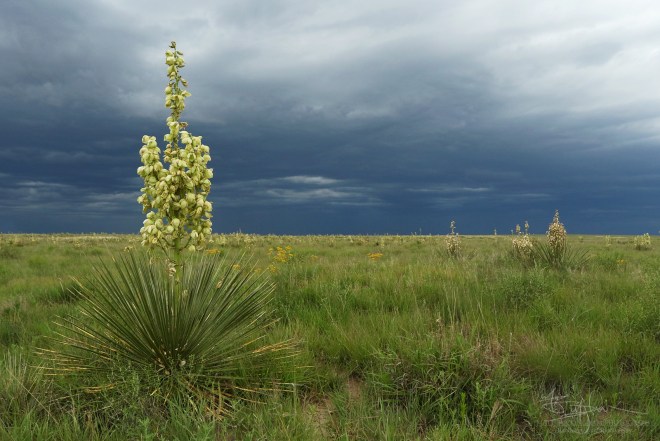
Blue Norther approaching the Rita Blanca Grasslands
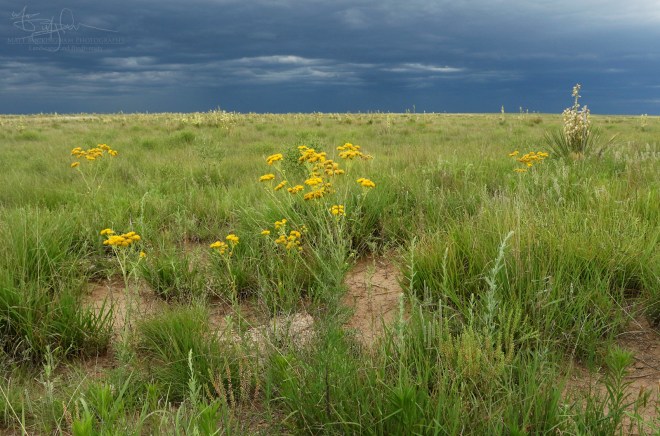
Blue Norther approaching the Rita Blanca Grasslands
As the rain calmed to a gentle drizzle we decided to take to the roads to see if we might turn up some amphibians en route to their breeding wetlands. It turned out to be a productive evening, and we found several Bufo cognatus, Bufo woodhousii, and Spea bombifrons. I only photographed a single B. cognatus that appeared to be heavily gravid. It is amazing that organisms that rely so heavily on water can be so abundant in a place where it seems so scarce.
It was a humbling experience to be at the mercy of such a force of nature so powerful and destructive as that blue norther, and to see the vital role it played in ensuring the survival of so many species.

Great Plains Toad (Bufo cognatus)
The next morning I had ambitions of rising early and photographing the sun rising over the prairie. When my alarm went off at some painful hour, however, I woke to the sound of gentle raindrops bouncing off the tent’s rain fly. It was the perfect sound for sleeping, so I drifted back asleep and woke again some hours later.
We went out into the damp morning to see if the rains may have spurred some animal movement. After a few miles, Caro spotted a nice Pronghorn (Antilocapra americana) buck on a yucca-laden hillside. It looked at us for a moment, and took off running to the crest of the hill. A pronghorn in motion is a beautiful thing. Their movements are so fluid-like and effortless. There is nothing on this continent’s land that can match their speed, and their aloof attitude makes one think that they know it.
We moved forward along a curve in the road to try to get a closer look at the buck where the ridge intersected our path. There he stopped for a moment to mark his territory and again took to running. It became evident that he was stopping every hundred yards or so and scent marking. Caro postulated that perhaps he was concerned that the rains had washed his scent from his territory.
We watched him cross the road and find a small gap in the fence. From there he disappeared over the distant horizon. In all we probably spent 10 minutes or more watching him, and I managed an image of him mid-gallop.

Pronghorn Buck

Pronghorn Buck

Pronghorn Buck Running
The wildflowers were looking rejuvenated after the rain. In fact, the cool, wet spring and the region had experienced resulted in a verdant paradise of grasses and forbs. I delighted in photographing a single Prairie Snowball (Abronia fragrans) plant. The specific epithet fragrans is appropriate, as the flowers emit a wonderful aroma into the early morning air. Like many species of Abronia, it is often pollinated by nocturnal moths, and the flowers open in the evening and generally close by mid-morning.
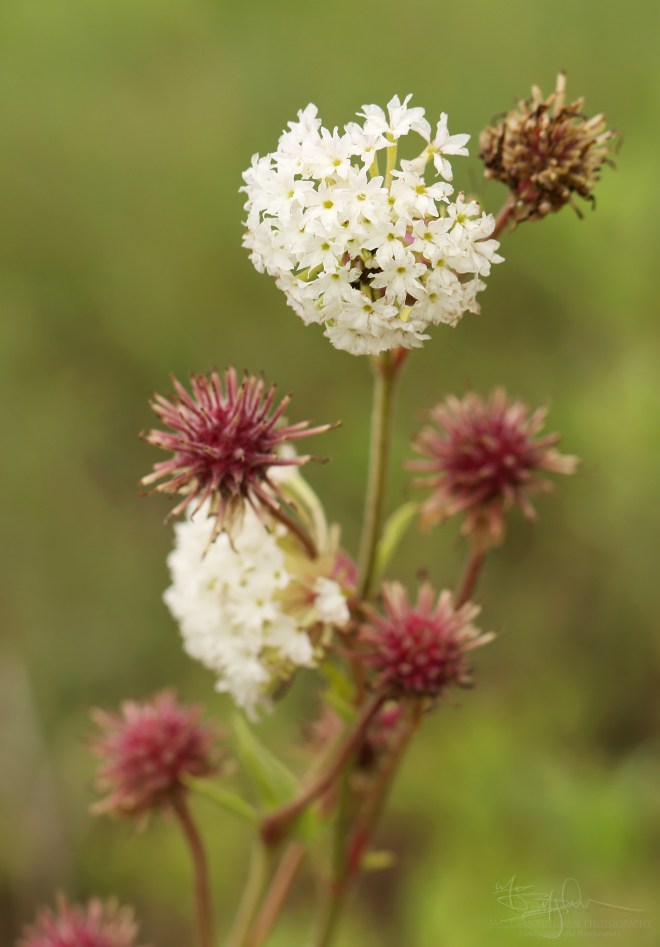
Prairie Snowball
The Plains Penstemon (Penstemon ambiguus) was at peak bloom, decorating the prairie with patches of pink and white.

Plains Penstemon
We also found a few late flowering patches of White Penstemon (Penstemon albidus). Some had a slight hint of purple to the blooms.

White Penstemon
With such an abundance of wildflowers, the pollinators were out in force as well. The most striking were the striped-sweat bees (Agapostemon sp.) that were feeding on the abundant thistles.

Striped-Sweat Bee
The Rita Blanca National Grassland is a haven for grassland birds. Many of the species that occur here are declining at an alarming rate as the prairie habitat they depend on vanishes or changes to a degree that it can no longer support them.
We drove slowly with the windows down so that we may hear them. Western Meadowlarks, Cassin’s Sparrows, and Horned Larks sang from the fence posts. We saw Burrowing Owls taking advantage of the numerous Black-tailed Prairie Dog towns scattered throughout the plains. We watched Greater Roadrunners dart along the primitive grassland roads as we listened to the distant whistling of Northern Bobwhites. Small, isolated woodlots provided a haven for birds like Bullock’s Orioles, Western Kingbirds, and Red-headed Woodpeckers.
At one point we were dive-bombed by aggressive Long-billed Curlew’s, a sure sign that they had a nest nearby. In Texas, these remarkable shorebirds only nest in the extreme northwest corner of the panhandle, which is close to the southern extent of their breeding range. Their nest was on the opposite side of a fence that we didn’t cross. Though the land was still public, I didn’t want to risk damaging the superbly camouflaged eggs which are laid in little more than a depression in the dried grass.
I photographed at Lark Sparrow (Chondestes grammacus) as it foraged in the short grass, and was fortunate enough to photograph an iconic prairie bird, the Grasshopper Sparrow (Ammodramus savannarum), as it sang its hissing song from atop the fading blooms of a yucca. The birds alone would be worth the trip, but they were only one part in an incredible community of plants and animals that captivated my every moment in this special place.

Lark Sparrow
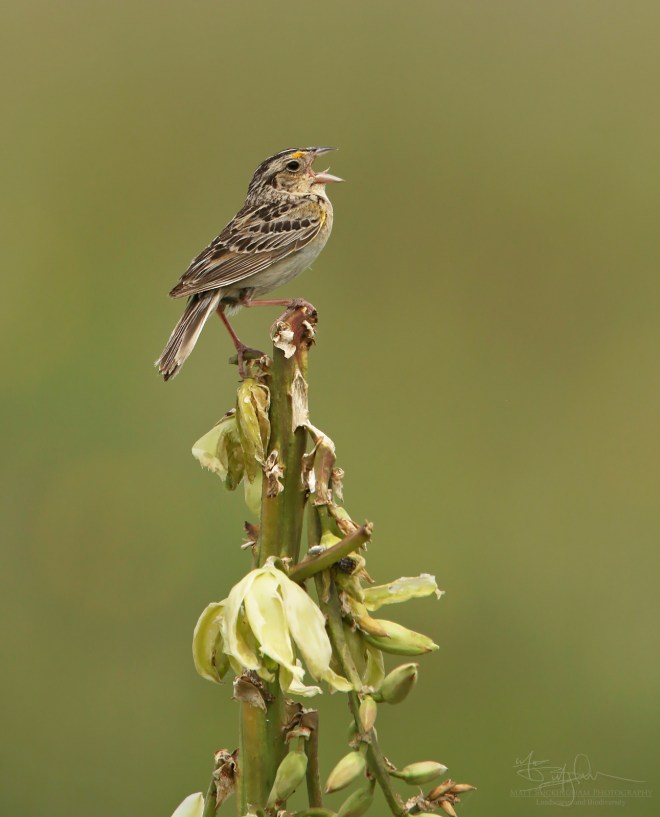
Grasshopper Sparrow
Among the numerous grassland birds is an elite killer, and a “respectable prairie raptor”, as my friend and U.S. Fish and Wildlife Service biologist Matt Whitbeck would say: The Swainson’s Hawk (Buteo swainsonii). These open country specialists undertake one of the most impressive migrations of all raptors, breeding in western North America, as far north as Alaska, and wintering in Argentina. During migration they may form large “kettles”, delighting bird watchers as they pass overhead en masse. They take a variety of prey on their summer hunting grounds, including prairie dogs, ground squirrels, rabbits, and even Burrowing Owls.

Swainson’s Hawk
As the rising sun warmed the prairie, we caught sight of a special creature scampering across an open patch of prairie soil. It was a Texas Horned Lizard (Phrynosoma cornutum), our state reptile, and one of the most famous icons of the Texas prairies.
Texas Horned Lizards have declined or disappeared throughout most of the state, however they continue to thrive in parts of the Panhandle and Trans Pecos. We saw several scurrying about in the late afternoon. These tiny dragons feed primarily on ants, and will often sit near a harvester ant mound picking off foragers as they move to and from the colony entrance.

Texas Horned Lizard
Viewing a Texas Horned Lizard from above reveals its incredible and intricate patterns and textures.

Texas Horned Lizard
It was a bittersweet feeling when our time at the Rita Blanca National Grassland came to an end. It meant saying good bye to the prairies of the Panhandle, but it also meant we would be continuing our journey westward into the Land of Enchantment. My time in the Panhandle Plains left me enamored with the landscapes and specialized flora and fauna of the area. It is a long drive from the Pineywoods, but one I will gladly make again. Until then, I will dream of incoming blue northers, running pronghorn, and the dawn chorus of grassland songbirds.

Rock Outcrop in Potter County


